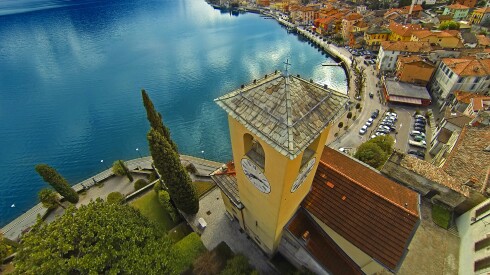You’ve booked the tickets, perused Instagram, and told everyone you know you’re going to Italy. You’ll soon be enjoying la dolce vita in some of the most beautiful cities in the world. So you’re all set, right? Well maybe not.
Italy is paradise, but it can also be inferno (just ask Dante). The intense heat, the crazy crowds of tourists, and the Italian penchant for closing a shop just at the moment you walk up can all conspire to frazzle even the most seasoned traveler. All that considered, here are five ideas for making the most of your trip to Italy.
1. Get up early
I know, I know, you’re on vacation. You want to stay out late partying, then sleep off your hangover. Plus, you’ve heard this advice before and have ignored it without any consequences (or so you think). But guess what? The absolute best time to explore an Italian city is in the early morning. That’s when the weekly produce markets are setting up shop in piazzas. That’s when the weather is cool and the sunlight sparkling. That’s the hour of the day when the pastries in the coffee bars are freshest. Guess what? That’s when you’re freshest.
2. Do what the Italians do
Seriously. Eat and drink what and when they do. There’s a reason Italians don’t drink cappuccino after lunch or dinner. And if you’ve ordered right and are eating healthy, you won’t want one either because you will be full from the food you ate.
Also, some bad news. Italians eat and drink in moderation. Yes, I said the dreaded “M” word. For a country with a reputation for excess (people and places that are excessively beautiful, for example), Italians have very sobering habits. They rarely eat too much pasta or drink too much wine at dinner. They know having a bit of everything is what actually makes you feel the best. Especially if you plan to walk around a hot Italian city all afternoon.
Here’s another tip: Stand at the counter when you go to an Italian coffee bar. I know you’re tired and you have shopping bags and want to lounge in a chair while gazing out at the piazza. But I promise you the best in free entertainment is watching Italian baristas interacting with regulars.
And while we’re at it, if it’s summer you may even want to ditch the cities on your itinerary and follow the Italians to the beach.
3. Take in some art
But not from the Renaissance. Wait, you say, I’ve booked my tickets to the Uffizi (or The Last Supper, or The Sistine Chapel) online already! That’s fine. But find a little time for some contemporary art, too. And not even necessarily Italian contemporary art (although that’s certainly worth your time, as well). Italians love all kinds of art from all over the globe. In Florence, for example, a former medieval prison is now an arts center and café that hosts modern dance performances, readings, and photo exhibits by artists from Korea, Japan, and a host of other places. You might even discover an artist from your hometown who’s beloved in Italy.
4. Learn some Italian
Now more than ever, Americans and other native English speakers can travel the globe without speaking the local language. This is increasingly true in Italy, which has developed what’s basically a crush on the English language. But you really should learn some Italian before you go there. Why? Because Italians are meant to speak Italian, and everything they say is funnier, cooler, and, of course, more nuanced when they say it in Italian. Let the Italians be Italian. If nothing else, you can listen in on the barista as he complains to regulars about traffic, the national soccer team, politicians, or all of the above.
5. Listen
OK, so you learned some Italian. Now it’s time to be quiet and listen. Because in addition to hearing Italians speak one of the most mellifluous languages on earth, you can also listen out for other sounds that will help you make the most of your Italy experience.
For example, the clatter of forks and knives. If you walk around an Italian town at lunchtime or dinnertime, you will hear, sailing out the window of apartment buildings, the sound of families setting the table. Italians still tend to eat lunch around 1 p.m. and dinner around 8 p.m.—as they’ve always done. The sound of dishes and forks and knives colliding in a collective clink tells you a lot about how people here continue to live their lives, and why the bank or the shop you wanted to visit is now closed.
And don’t forget to listen out for the church bells. There’s nothing like standing in a piazza or crossing a bridge in Italy when a nearby church chimes out ten, eleven, or twelve o’clock. It’s not something you can share on Twitter. But it’s your moment to pause, put down the camera, breathe in, and thank your lucky stars there is an Italy and you’re here.
Want more? Check out our ultimate travel guides to Florence and Rome!






